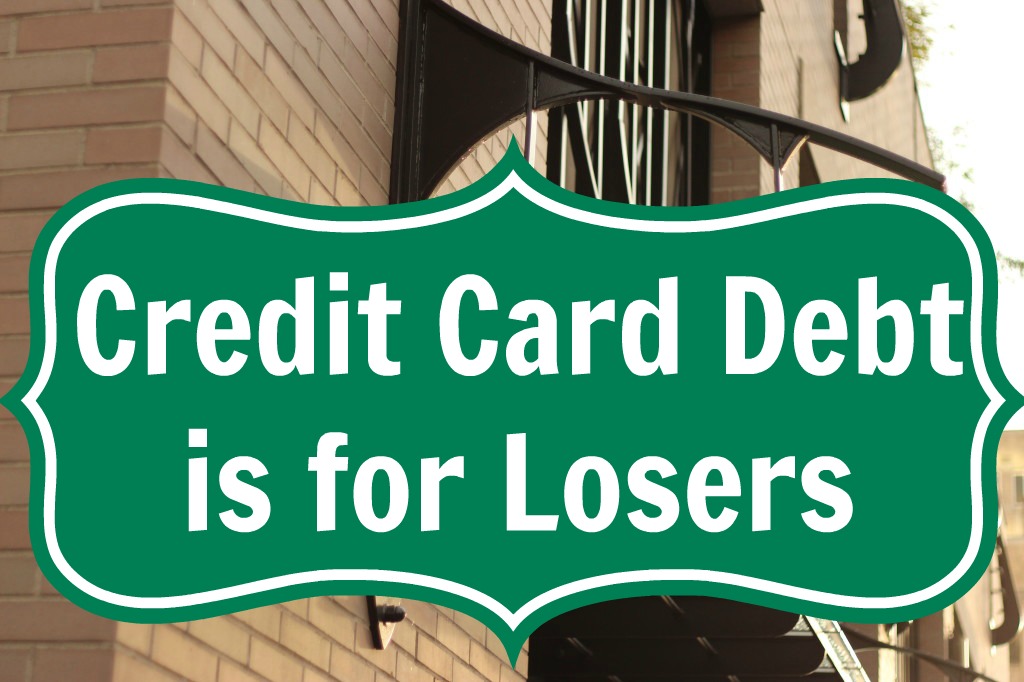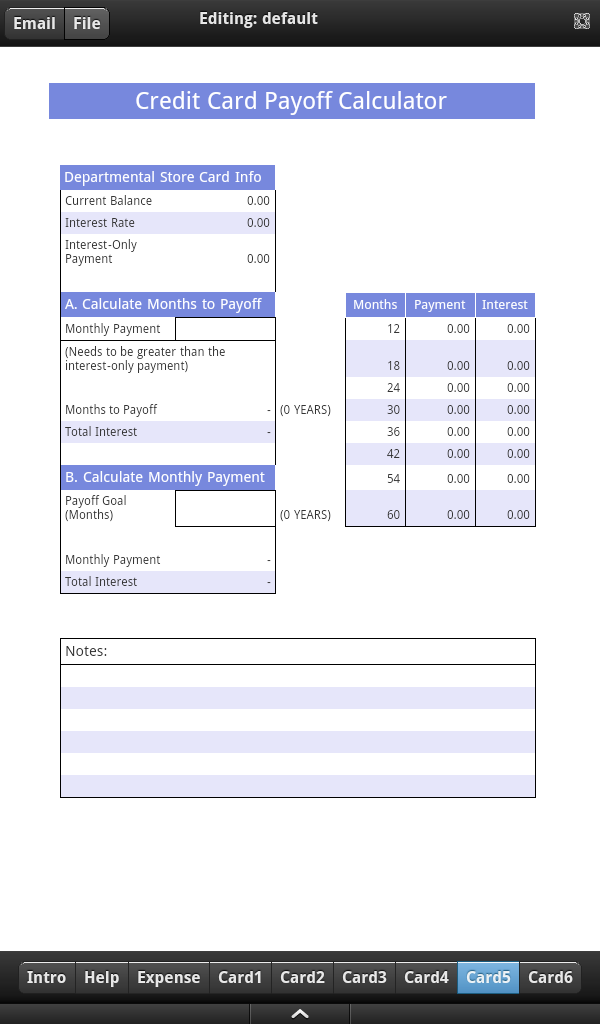The debt-snowball method is a debt reduction strategy, whereby one who owes on more than one account pays off the accounts starting with the smallest balances first, while paying the minimum payment on larger debts. Once the smallest debt is paid off, one proceeds to the next slightly larger small debt above that, so on and so forth, gradually proceeding to the larger ones later. This method is sometimes contrasted with the debt stacking method, also called the "debt avalanche method", where one pays off accounts on the highest interest rate first.

Overview
The debt-snowball method of debt repayment is a form of debt management that is most often applied to repaying revolving credit -- such as credit cards. Under the method, extra cash is dedicated to paying debts with the smallest amount owed. As each smaller debt is repaid in full, the monthly money used to pay that debt is then applied toward making additional payments on the next-smallest debt, and so on until all debts are repaid.
Paying Off A Credit Card Video
Methodology
The basic steps in the debt snowball method are as follows:
- List all debts in ascending order from smallest balance to largest.
- This is the method's most distinctive feature, in that the order is determined by amount owed, not the rate of interest charged. However, if two debts are very close in amount owed, then the debt with the higher interest rate would be moved above in the list.
- Commit to pay the minimum payment on every debt.
- Determine how much extra can be applied towards the smallest debt.
- Pay the minimum payment plus the extra amount towards that smallest debt until it is paid off.
- Note that some lenders (mortgage lenders, car companies) will apply extra amounts towards the next payment; in order for the method to work the lenders need to be contacted and told that extra payments are to go directly toward principal reduction. Credit cards usually apply the whole payment during the current cycle.
- Once a debt is paid in full, add the old minimum payment (plus any extra amount available) from the first debt to the minimum payment on the second smallest debt, and apply the new sum to repaying the second smallest debt.
- Repeat until all debts are paid in full.
In theory, by the time the final debts are reached, the extra amount paid toward the larger debts will grow quickly, similar to a snowball rolling downhill gathering more snow (thus the name).
The theory works as much on human psychology; by paying the smaller debts first, the individual, couple, or family sees fewer bills as more individual debts are paid off, thus giving ongoing positive feedback on their progress towards eliminating their debt.
A first home mortgage is not generally included in the debt snowball, but is instead paid off as part of one's larger financial plan. As an example, many financial plans pay off home mortgages in a later step, along with any other debt which is equal to or greater than half of one's annual take-home pay.
The issue of whether one should make retirement contributions during the debt reduction process is a matter of dispute among proponents of this method:
- Some argue that all contributions are to be halted during the debt snowball, thus freeing up more money to pay down the debt snowball.
- Others dispute this practice, citing the cost of compounding interest to be greater than the gains of paying off debt.
- Some compromise by arguing that retirement contributions should be reduced to only the minimum amount that the employer will match with an employee, but not eliminated completely.
- Many financial and wealth experts teach that this halting of retirement contributions should last no more than two years.

Example
An example of the debt-snowball method in action is shown below.
(This example does not add in the accruing monthly interest of the credit cards and loans making the balance amounts higher and payoff time longer.)
A person has the following amounts of debt and additional funds available to pay debt (the debt is listed with the smallest balance first, as recommended by the method):
- Credit Card A - $250 balance - $25/month minimum
- Credit Card B - $500 balance - $26/month minimum
- Car Payment - $2500 balance - $150/month minimum
- Loan - $5000 balance - $200/month minimum
- The person has an additional $100/month which can be devoted to repayment of debt.
First two months - under the debt-snowball method, payments would be made to the creditors as follows:
- Credit Card A - $125 ($25/month minimum + $100 additional available)
- Credit Card B - $26/month minimum
- Car Payment - $150/month minimum
- Loan - $200/month minimum
Third month balance (presuming the person has not added to the balances, which would defeat the purpose of debt reduction) - Credit Card A would have been paid in full, and the remaining balances as follows:
- Credit Card B - $448
- Car Payment - $2200
- Loan - $4600
Third month payments - the person would then take the $125 previously used to pay off Credit Card A and apply it as additional payment to the Credit Card B balance, which would make payments for the next three months as follows:
- Credit Card B - $151 ($26/month minimum + $125 additional available)
- Car Payment - $150/month minimum
- Loan - $200/month minimum
Three more months (six total) - Credit Card B would be paid in full (the final payment would be $146), and the remaining balances would be as follows:
- Car Payment - $1750
- Loan - $4000
Then the person would take the $151 previously used to pay off Credit Cards A & B and apply it as additional payment to the car loan balance, which would make payments as follows:
- Car Payment - $301 ($150/month minimum + $151 additional available)
- Loan - $200/month minimum
It would take six months to pay the car loan (the final payment being $240), whereupon the person would then make payments of $501/month toward the loan (which would have a $2800 balance) for six months (with the last payment at $234).
Thus in 17 months the person has repaid four loans, with two of them being paid in a mere five months and three within one year.

Benefits
The primary benefit of the smallest-balance plan is the psychological benefit of seeing results sooner, in that the debtor sees reductions in both the number of creditors owed (and, thus, the number of bills received) and the amounts owed to each creditor.
Retirement contributions should start once your expected investment yield is higher than the next highest debt interest rate (generally 8% for a balanced portfolio).
In a 2012 study by Northwestern's Kelloge School of Business, researchers found that "consumers who tackle small balances first are likelier to eliminate their overall debt" than trying to pay off high interest rate balances first.

Criticism
People with more financial discipline can get ahead more quickly by paying off the credit cards and loans with the higher interest rates first. This will minimize costs to become debt-free faster than the smallest-balance approach.
Dave Ramsey, a proponent of the debt-snowball method, concedes that "the math" leans toward paying the highest interest debt first; however, based on his experience, Ramsey states that personal finance is "20 percent head knowledge and 80 percent behavior" and that people trying to reduce debt need "quick wins" (i.e., no more bills from creditors paid off in full) in order to remain motivated toward debt reduction.

Research
Decision-making research has revealed that the debt-snowball method is a very common approach to managing multiple debts, even when larger debts have larger interest rates. Amar, Ariely, Ayal, Cryder, and Rick (2011) observed this tendency in surveys of indebted consumers and in incentive-compatible experiments. Amar et al. (2011) found that people naturally use the snowball method, by paying off small debts first, and this reflects negatively on their financial outcomes since they keep on paying off debts in an inefficient way. Moreover, Amar et al. (2011) found that restricting participants' ability to completely pay off small debts actually helped them to reduce overall debt more quickly, by refocusing their attention on paying off high-interest debts. The natural tendency to pay off small debts first (which Amar et al. termed "debt account aversion") has been attributed to the appeal of achieving goals that are near completion and the tendency for multiple losses (e.g., debts) to be more distressing than a single loss of equivalent total value.
Are You Looking for Products
Here some products related to "Debt-snowball Method".
Credit Card Payoff Calcul..
Credit Card Payoff Calcul..
Credit Card Payoff Calcul..
Credit Card Payoff Calcul..
Get these at Amazon.com* amzn.to is official short URL for Amazon.com, provided by Bitly
Source of the article : here






EmoticonEmoticon